Green bicycle mystery: Case 'worthy of Sherlock Holmes'
- Published
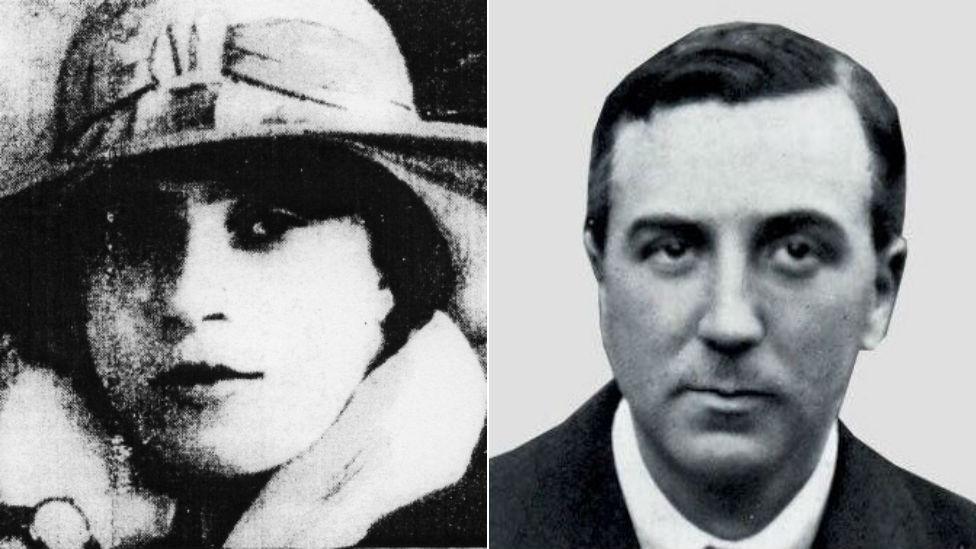
The story of Bella Wright's life has been overshadowed by the debate over Ronald Light's innocence
It was a murder trial that captivated a nation: a well-spoken former Army officer represented by the most famous barrister of the day stands accused of killing a vivacious, independent young woman.
The body of Bella Wright was found next to her bicycle on the evening of 5 July 1919. She had been shot in the head.
For months no progress was made in the case - it was not even established at first that she had been shot - until a green bicycle fished out of a river pointed to the prime suspect, Ronald Light.
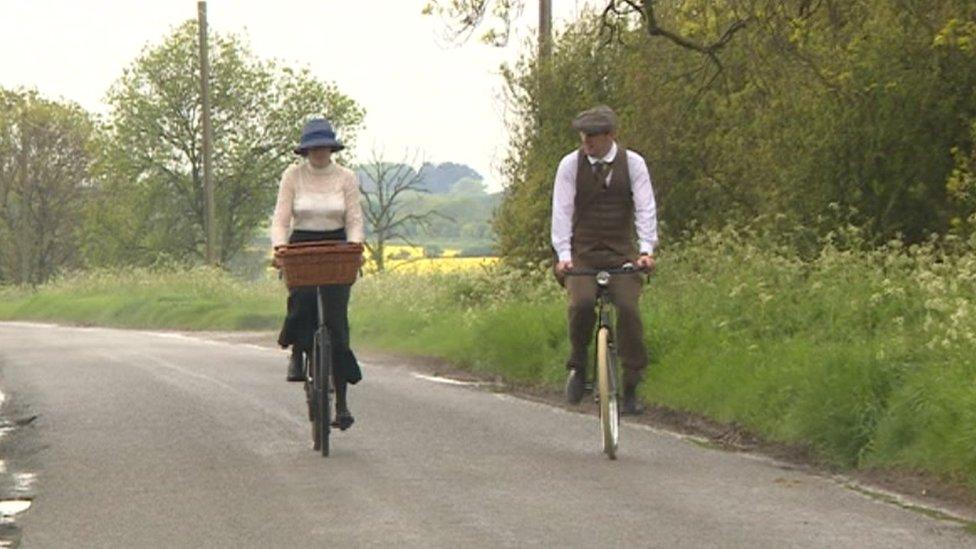
Actors have recreated sightings of Bella Wright with a stranger on a green bicycle
One hundred years on from the killing, experts in the so-called green bicycle case have been turning their attention from the drama of the trial to the woman who lost her life.
Bella was an example of a new kind of woman in the early 20th Century, with an independence and confidence that was hardly conceivable to previous generations.
Cycling historian Roger Lovell, who has helped set up a centenary exhibition focusing on her, said: "Everyone was so caught up with Ronald Light, and the headlines of the trial, that Bella was almost forgotten.
"She seems to have just been regarded as part of the evidence - her body was, in a way, 'exhibit A'."
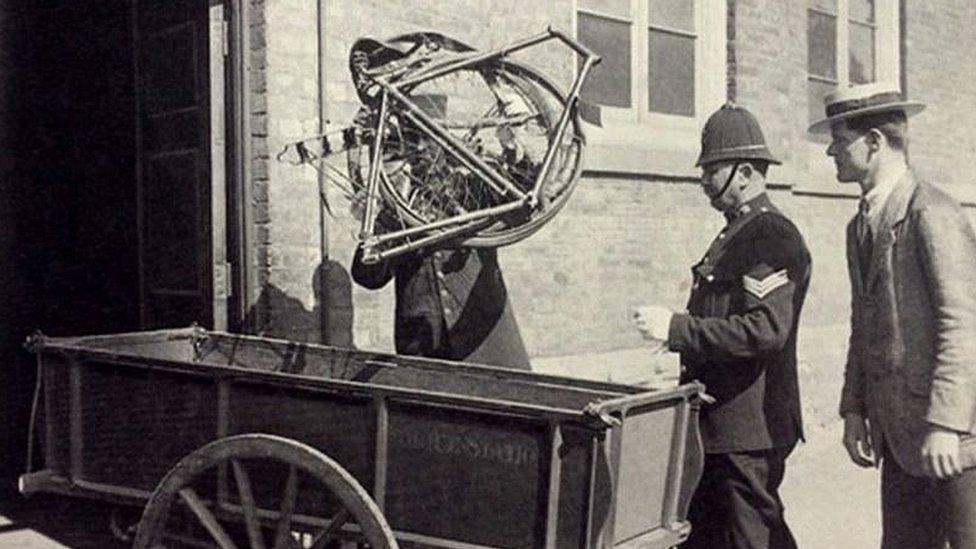
The infamous green bicycle was presented as evidence at the trial
Mr Lovell said he wanted to show the "real person" at the centre of the case.
"She was the daughter of an illiterate agricultural labourer and lived in a rural cottage," he said. "But by early 1919, aged 21, she had a well-paid job, smart appearance, a good social life and the freedom to move around on her own."
Key to this independence was her bicycle, which enabled Bella to commute the five miles from her Stoughton home to her job at a rubber factory in Leicester, and to enjoy her free time. On weekends, according to the Leicester Mercury, "She was often to be seen riding alone. She was never really happy except when enjoying the pleasures of the countryside."
But in one of those country lanes, as dusk fell near the village of Little Stretton, her bloodied body was found.

Newly discovered notes show PC Alfred Hall's careful study of the area

Author and crime historian Antony Brown said: "The elements of this, the location, the enigmatic clues, make it feel like a case worthy of Sherlock Holmes.
"The first person to have a look was a local doctor who, as night fell, decided it was a road accident and had the body moved to a nearby cottage on a milk cart. But the local bobby, PC Alfred Hall, was unhappy with this and returned to the scene early next day. Oddly, there were bloody bird prints where the body had been and there was blood on a nearby gate.
"Just 17ft (5.2m) from there, he found a bullet was pressed into the road. He went back to the body and washed the face. Just under the left eye was a bullet hole.
"The accident had become a murder."

Modern-day crime enthusiasts regularly don costumes to retrace the route and discuss the clues

Witnesses agreed Bella had been cycling with a slightly scruffy man that afternoon. All noticed his distinctive pea-green bicycle.
As the police worked, Bella was buried on 11 July in Stoughton. Hundreds attended. But extensive appeals failed to trace the man and it appeared the case had gone cold.
However, seven months later, on a February morning, a barge snagged something in Leicester's River Soar. It was a pea-green bicycle. While most of the serial numbers had been filed off, one set was still legible. It led straight to Ronald Light.

Crime scene investigation was still in its infancy but a police sketch gives basic details of what happened
Thirty-four-year-old Light was the troubled son of a wealthy engineer. He had been expelled from school, fired from a job and lost his commission in the Army. His past included allegations of arson, improper conduct with girls and forging military orders - although the jury at his trial did not hear about his murky history.
Light initially denied owning the bicycle or meeting Bella, but witnesses identified him as her companion on the day she died. A holster traceable to Light was also pulled from the river. In it were bullets matching the one found near Bella's body.
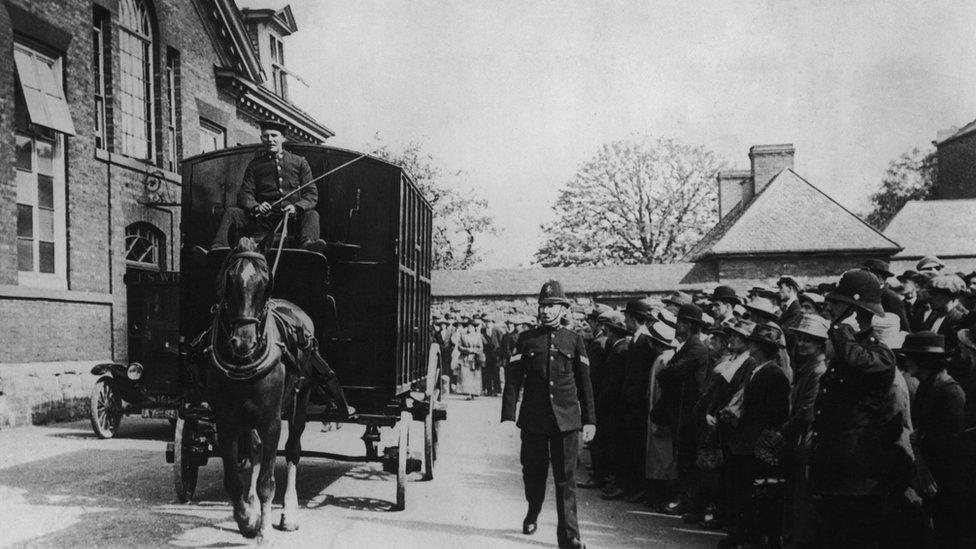
The case generated huge public interest and headlines across the country
The trial of Ronald Light began in Leicester in June 1920.
Mr Brown said: "Despite his very chequered past, public sympathy seemed to be on his side, helped by his well-spoken and calm manner. There was a huge amount of circumstantial evidence against him but he was lucky to be defended by one of the great barristers, Edward Marshall Hall, who took the prosecution case to bits."
Marshall Hall did not challenge the witnesses, accepting that Light was the man on the green bicycle.
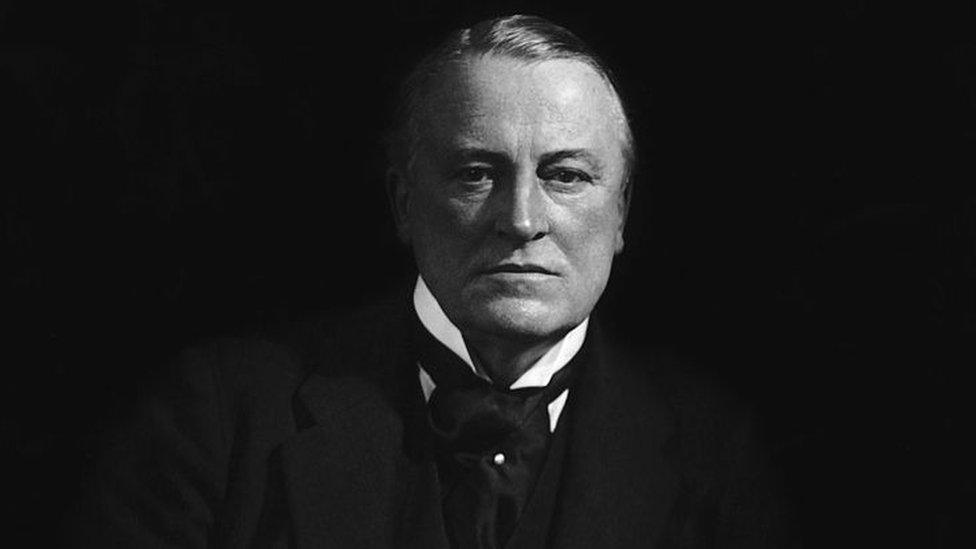
Edward Marshall Hall was already known as a formidable advocate before his extraordinary defence of Ronald Light
Instead he focused on the lack of obvious motive and absence of witnesses to the death. Marshall Hall also raised doubts over the bullet found near Bella.
Mr Brown said: "He suggested it could have come from a rifle. He also suggested it bore marks of a ricochet. Moreover, he pointed out such a large bullet, fired at close range, would have caused a larger wound. This raised the possibility the bullet may have nothing to do with Bella, and also that her death was perhaps a tragic accident."
Could Bella have been hit by a bullet from an unknown third person shooting animals in the fields? Unlikely as it seemed, the doubt was enough.
On 11 June 1920, Light was found not guilty and slipped away to a new life under an assumed name.
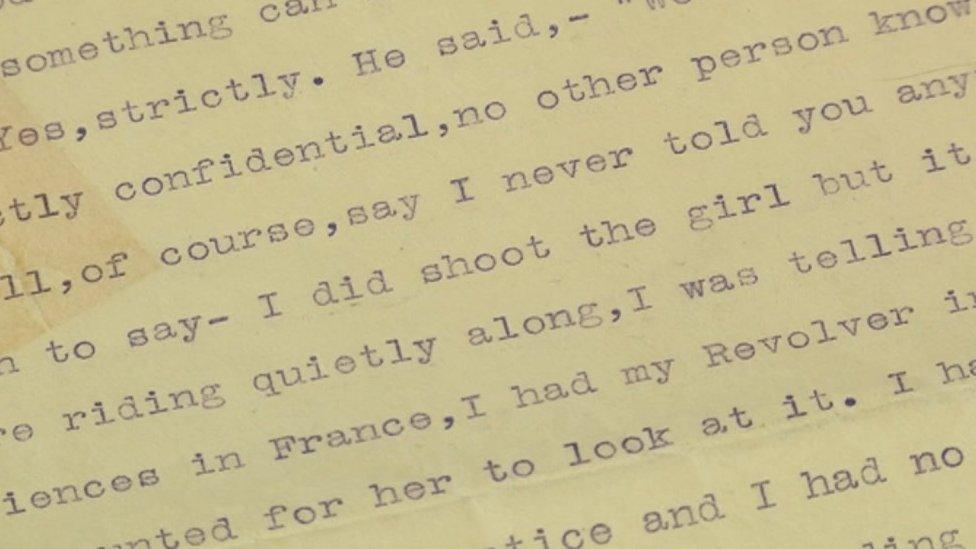
An apparent confession, typed up by a local policeman, would later emerge
Bella's family were left to cope alone. They could not afford a headstone, so the grave was left unmarked until the 1980s. Bella's great-niece Pam Kelly had said: "I know that my mum said her mum, Bella's mum, never got over it. The whole family thought he had done it and got away with it."
In a dramatic twist, an apparent confession was recently uncovered in police archives. The typewritten account states that in the days after the trial, Light went into a police station to collect some belongings. There he told an officer with whom he was friendly that he had in fact killed Bella, but insisted it was an accident.
He also said he would deny the story if it became public. The officer's notes were filed away.
Mr Lovell said: "Reading about Bella you get the impression of a confident, popular lady, whose life was about to take off.
"And whatever the guilt or innocence of Light, what happened to Bella was a tragedy."
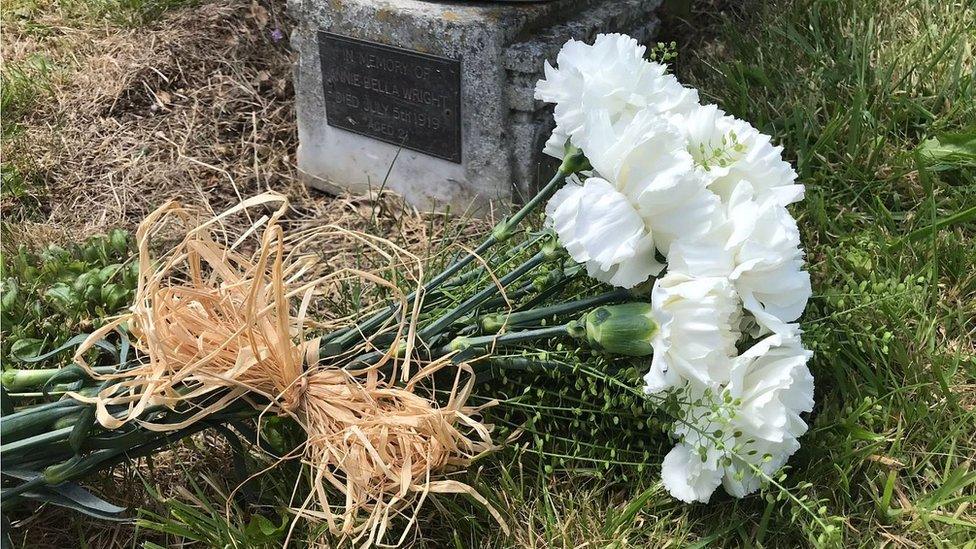

Follow BBC East Midlands on Facebook, external, Twitter, external, or Instagram, external. Send your story ideas to eastmidsnews@bbc.co.uk, external.
- Published19 May 2016
